Getting out in the sun is one major reason many people go boating. But spending many hours in direct sunlight can do damage to your skin and the ‘skin’ of your boat. To protect yourself and your boat’s vinyl furniture, flooring, and other components, you’ll need these boat sun protection tips.
From ways to protect your boat to ways to protect yourself and other passengers, we’ll cover it all so you can enjoy your time in the sun without it becoming hazardous to your health or your boat’s longevity.
Boat Sun Protection Tips
How to Protect Your Boat From Sun Damage
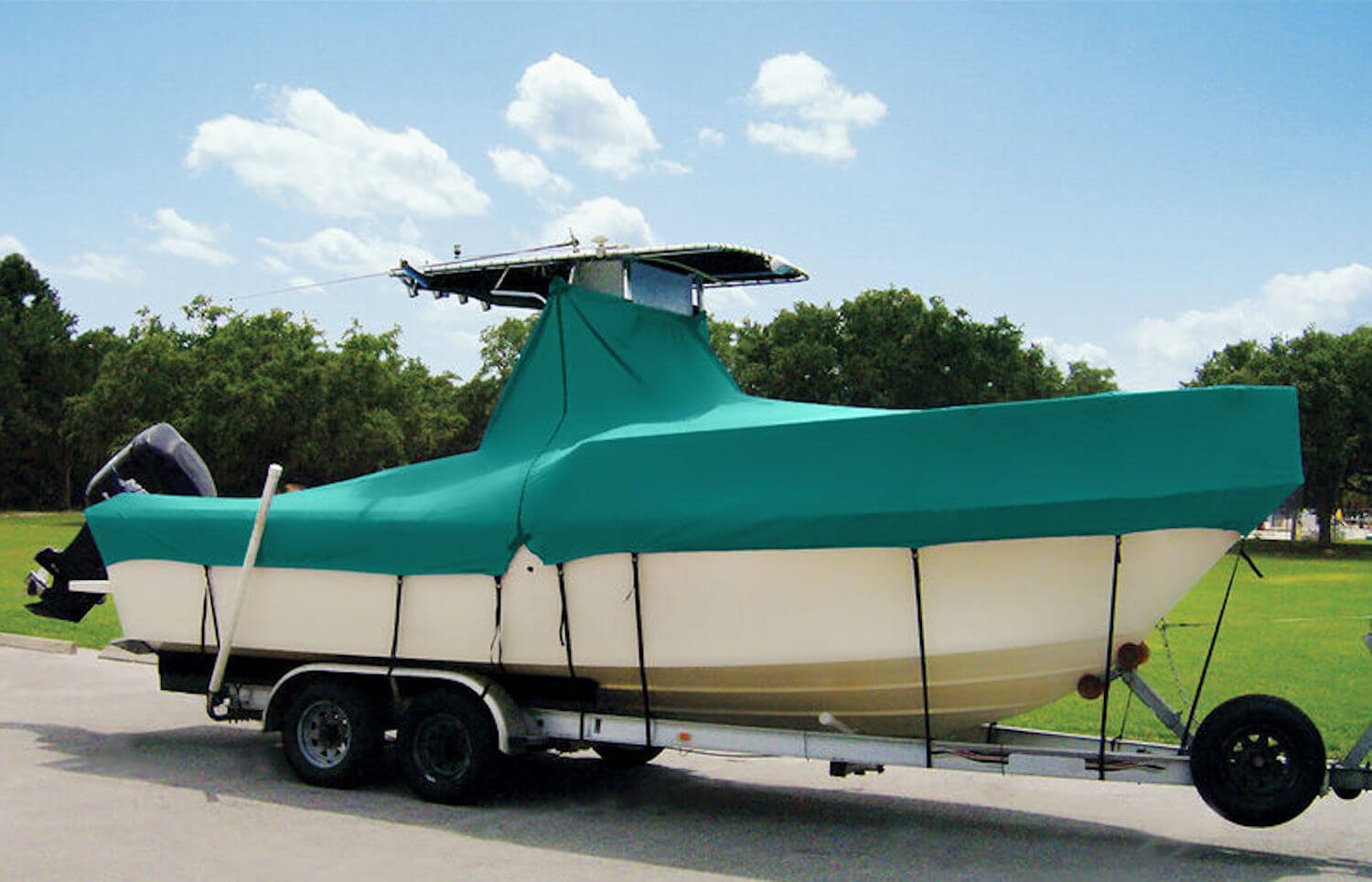
When you aren’t actively using your boat, the best way to protect your boat from sun damage is to use a boat cover or top. You can employ boat covers whether you pull your boat out onto a boat trailer or leave it parked in a boat slip between uses.
However, you do want to allow plenty of time for your boat’s cabin to dry completely after use before installing your boat cover in order to reduce the likelihood of mold or mildew growth.
Shop boat covers and PWC/jet ski covers at Overton’s.
When you do put your boat in storage for several months at a time, you should go a step further than simply covering. Most boat owners shrink wrap their boats for extended storage to protect them from moisture, falling debris, and, of course, UV exposure.
How To Maximize The Life of Your Boat Cover

While your boat cover reduces sun damage to your boat, the cover itself can take a beating if not maintained properly. The good news is that boat covers are designed for prolonged UV exposure. But that doesn’t mean you can’t use these tips to make your boat cover last:
- Wash your boat cover thoroughly at least once a year.
- Allow it to dry completely before storing between uses.
- Store in a hard-sided container to prevent it from being ripped or torn by passersby
- Place a sealed lid on the container if you’ll be storing it outside
- The best case is to store it in a covered area like your garage.
- Avoid sharp objects (i.e. utility knives, multi-tools, etc.) during installation and removal.
- Consider a vent or dehumidifier to control moisture and ventilation under the cover.
You should also consult the manufacturer of your boat cover to see if you should be applying a weatherproofing solution to the exterior of your cover as part of your regular boat maintenance routine.
Additionally, larger boat covers may need extra support to keep them from collecting water that can eventually cause rips and tears. This is especially important for pontoon boats, which is why most owners install supports under the boat cover to improve its ability to shed water.
How to Protect Boat Seats From Sun Exposure
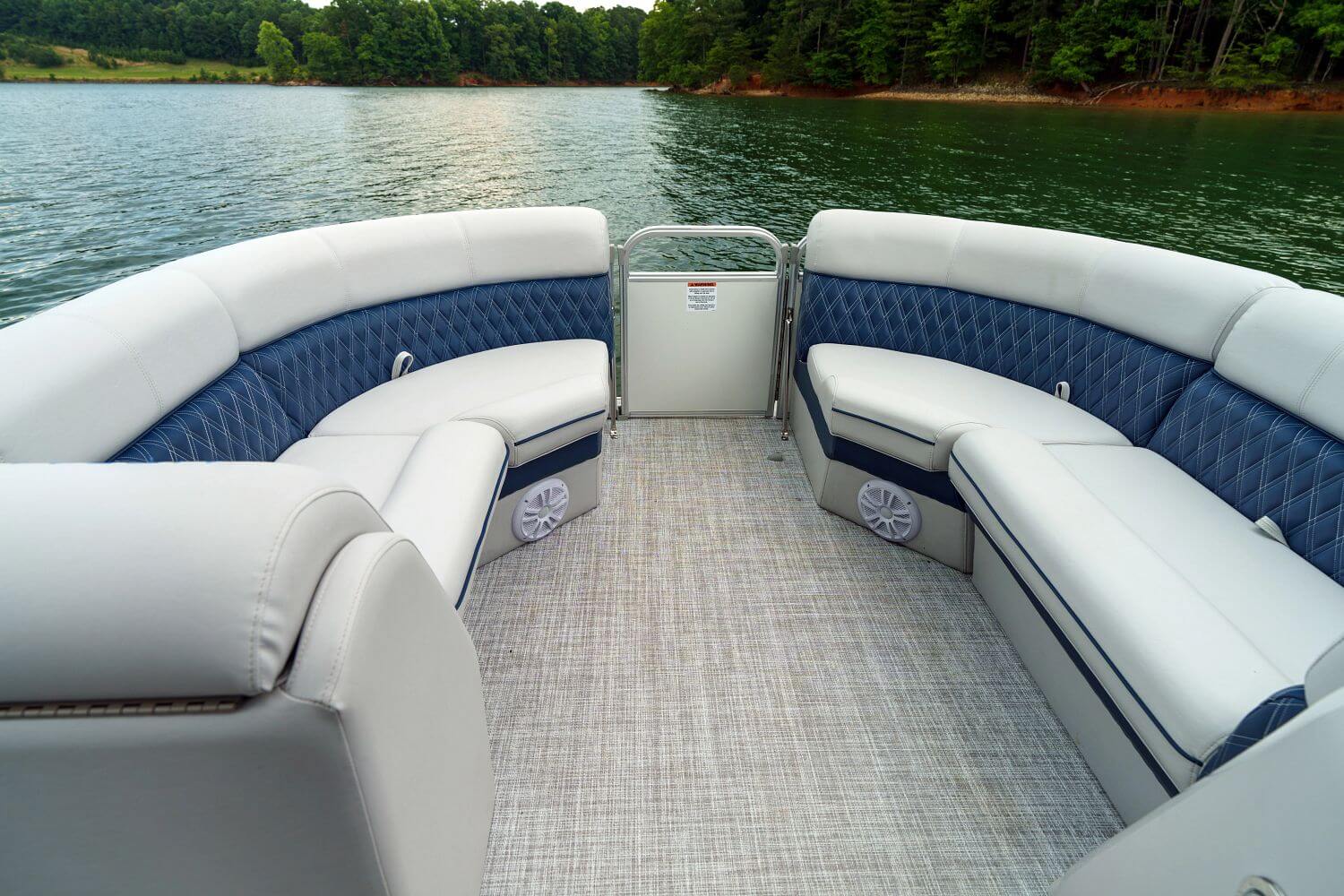
Even the most durable boat seats can suffer if left exposed to UV rays for too long. While your boat cover will protect your seats when you aren’t using your boat, you can take additional steps to protect boat seats from sun exposure.
One way is to use a bimini top on your boat to provide shade over specific areas. Depending on the angle of the sun, you may need to maneuver your boat to provide shade where you need it.
Another option is to install a boat shade or enclosure on your boat to minimize direct sun on your boat seats. Both of these options are great for pontoon boats and can be used on other types of boats as well.
You will just need to check the instructions for bimini tops and enclosures to check whether they need to be removed or folded down before traveling at higher speeds. Otherwise, you can risk damaging the fabric or the anchor points holding these enclosures in place.
Shop pontoon bimini tops at Overton’s.
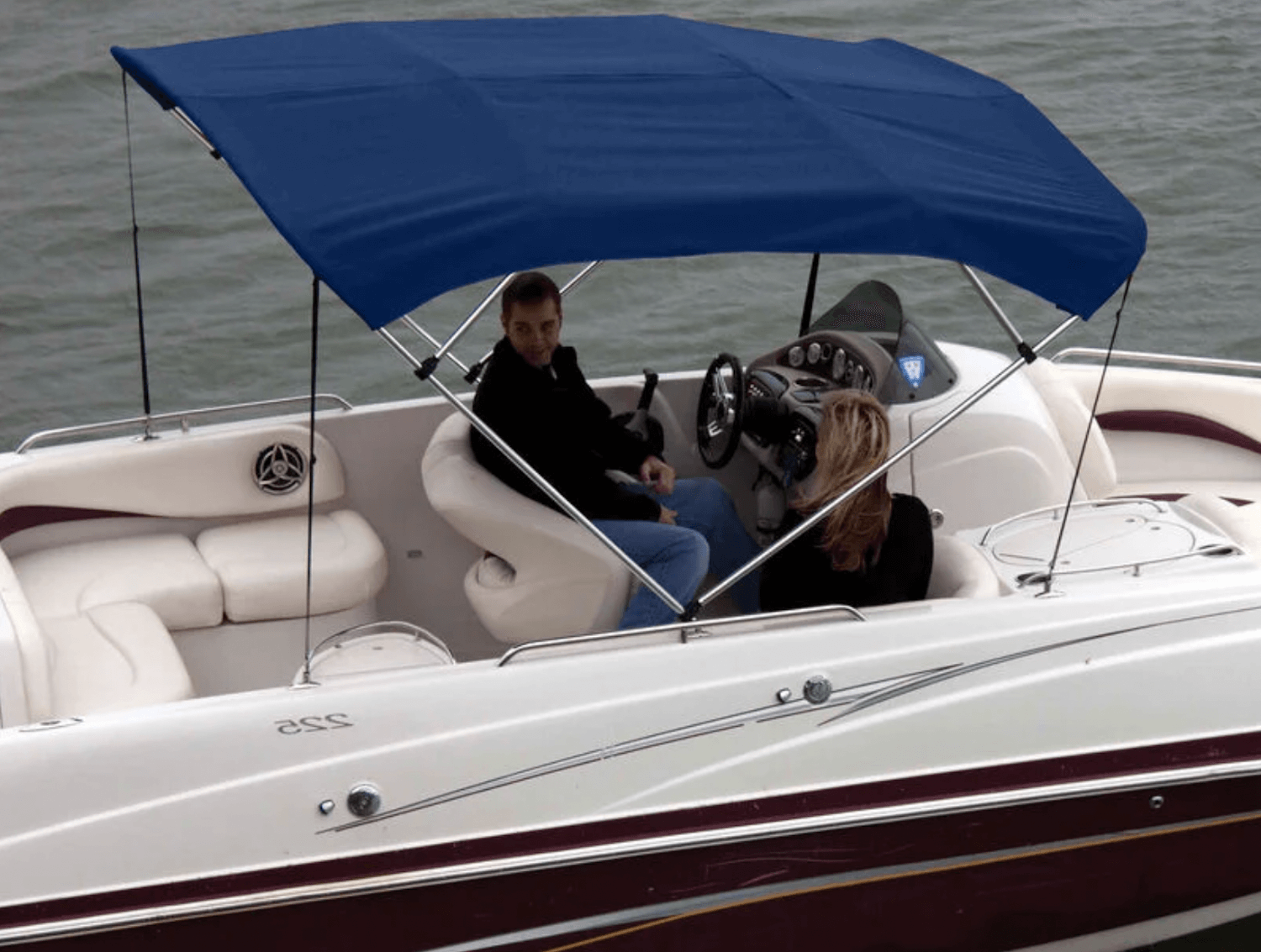
Your final solution is to clean and care for your boat seats regularly. Dirty seats are more likely to be compromised by prolonged UV exposure, especially if any chemicals or other substances spilled on the seats are left to soak in.
Your best course of action is to wipe up any spills promptly and then make wiping down your boat seats part of your routine at the end of every boat trip. You can also use products designed especially for boat seats to clean and remove residue during annual boat maintenance.
Shop all marine vinyl care products at Overton’s.
How to Add More Shade to Your Boat Deck
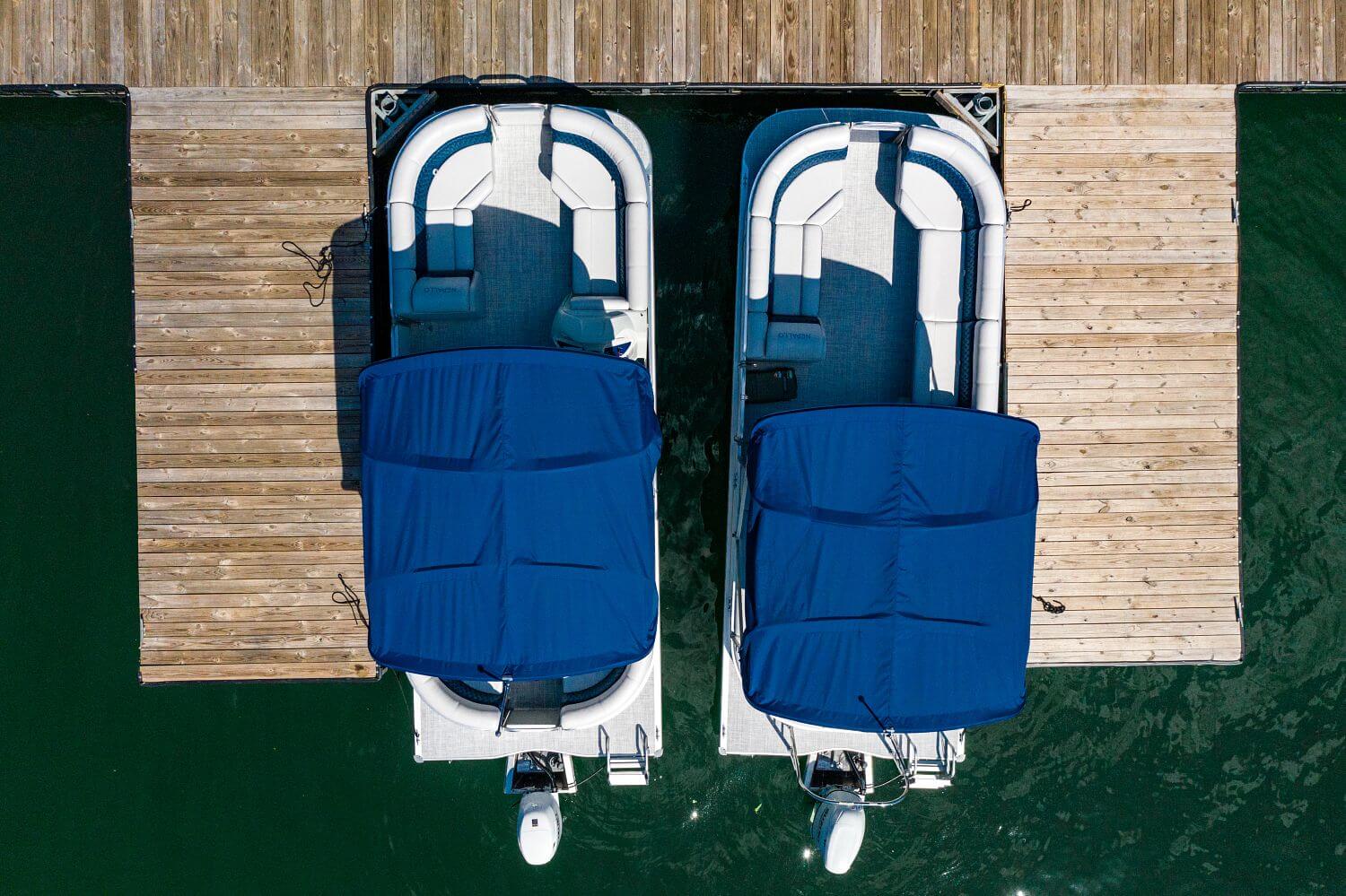
Fortunately, adding shades, enclosures, or bimini tops to your boat will also add more shade to your entire boat deck. This is important for reducing sun exposure on marine flooring and is also helpful to make your boating experience more comfortable on hot days.
While it won’t necessarily eliminate the need to wear sunscreen, adding shade to your boat deck is also helpful for reducing the amount of direct sunlight you and your passengers have to deal with while you’re out on your boat.
Shop boat shades and enclosures at Overton’s.
What is the Best Sunscreen for Boating?
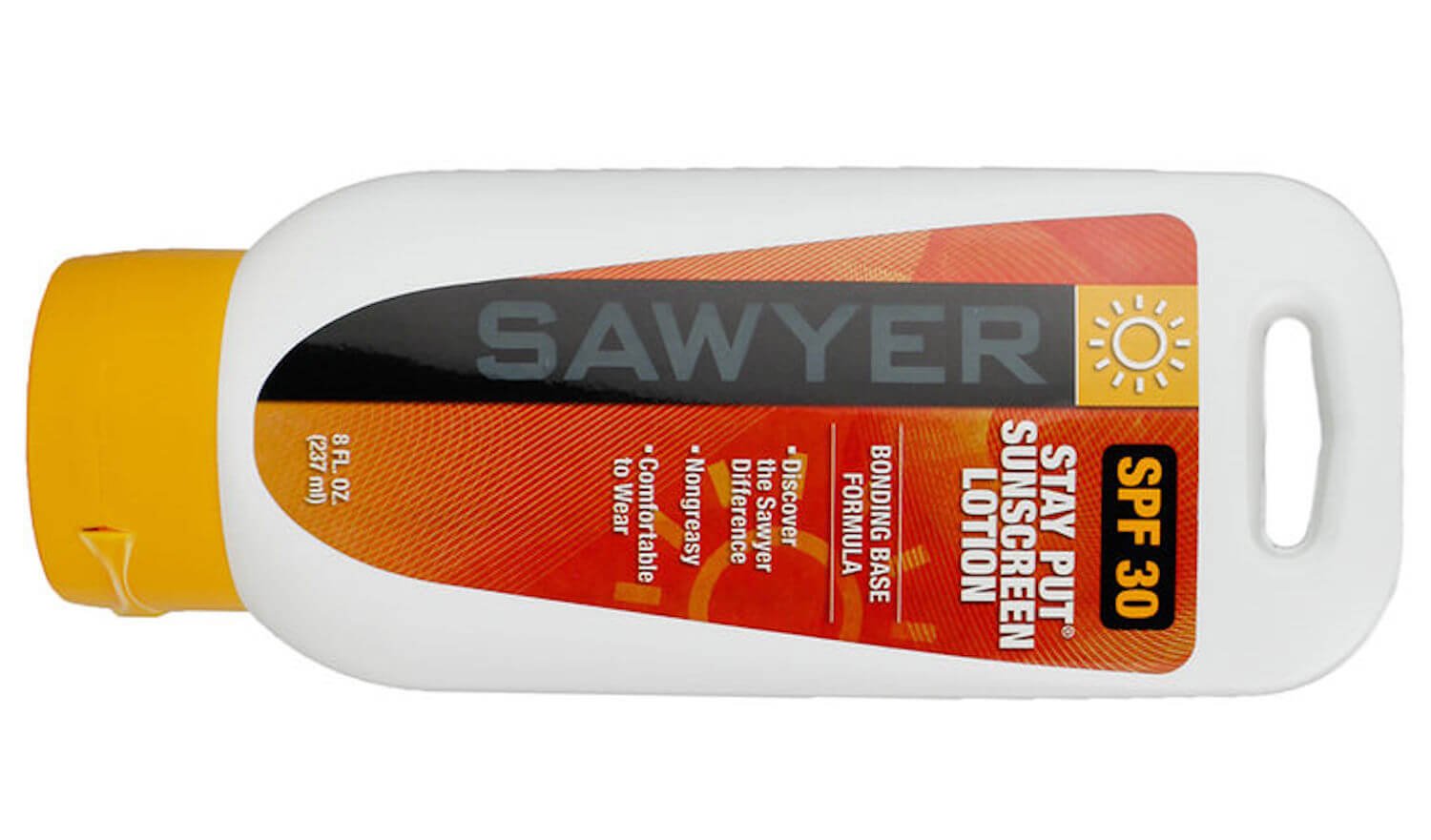
There is a lot of debate as to what makes the best sunscreen for boating. But we want to start off by saying that you should be aware of any skin-related allergies you might have before trying out any new topical sunscreen product.
Most of us are familiar with Banana Boat sunscreen products. Other recommended brands include Sun Bum, Badger, and Hawaiian Tropic. However, the key to selecting sunscreen for boating is more about getting the right sun protection factor (SPF) than it is about selecting a quality brand.
For those of you that don’t know, SPF is a measurement of how well a sunscreen will protect your skin from sunburn. Let’s provide a quick example:
If your skin normally burns after just 10 minutes in direct sunlight, an SPF 30 sunscreen will extend that time to roughly 300 minutes (a factor of 30). Of course, the true metric will depend on other factors like time of day and whether or not you allow your skin to absorb the sunscreen before swimming.
What makes this somewhat confusing is the fact that the strength of the sun’s rays varies throughout the day. For example, your skin will absorb roughly the same amount of solar energy in one hour of exposure early in the morning as it will in 15 minutes of exposure at one o’clock in the afternoon.
To make it clear, wearing sunscreen is going to provide more sun protection for your skin than you will get without it. You’ll just need to select how much protection you need depending on when you go out and how long you usually stay out.
You might also want to check with your dermatologist to see what the best sunscreen is for your skin.
What Are The Best Shirts for Boating?
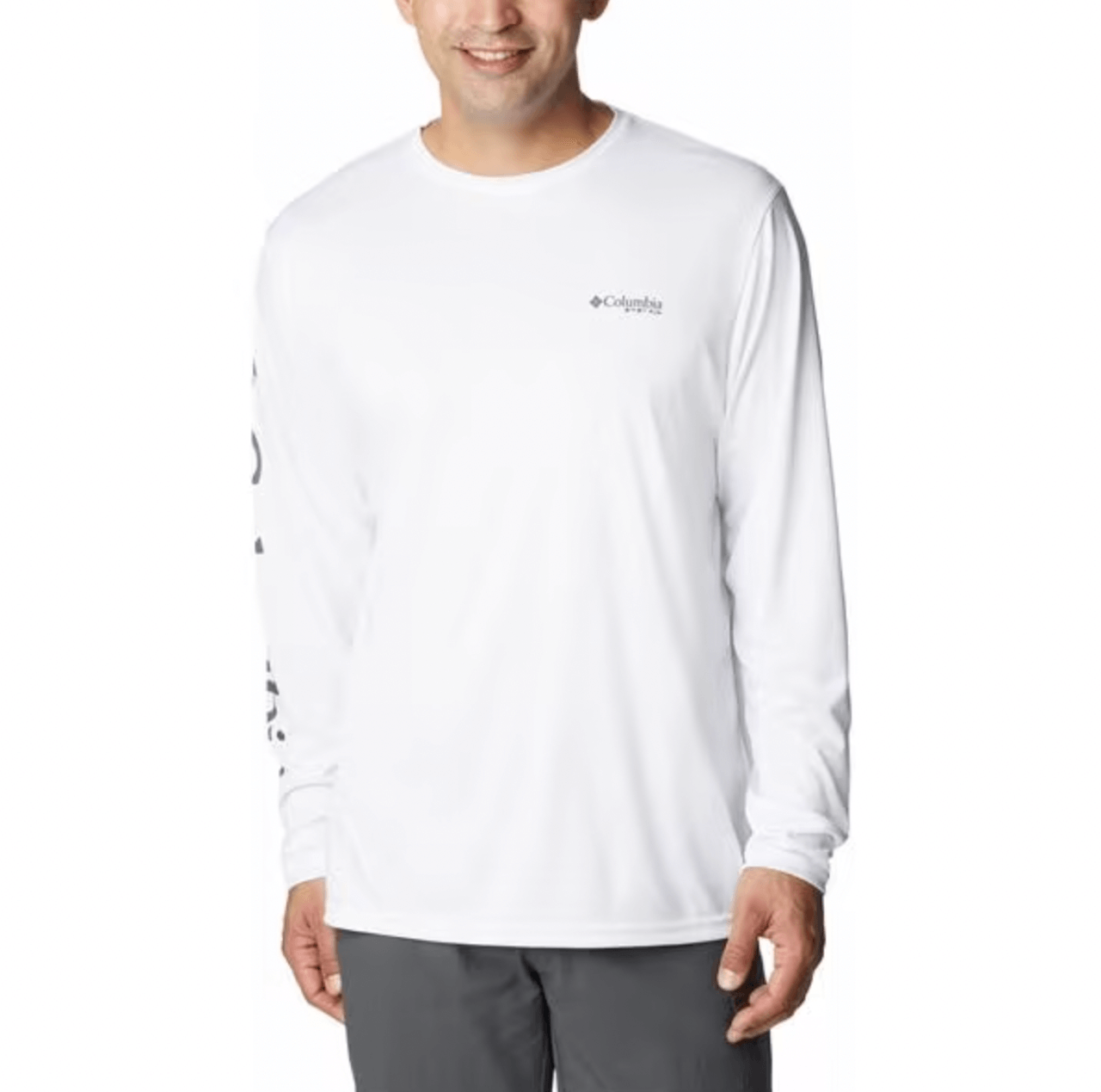
If you’re not a fan of lathering sunscreen on every few hours, or you have an allergy that prevents you from doing so, the next best bet is to find some type of boating or sailing shirt with UV protection.
Many of these performance fishing and paddling shirts actually have their own SPF factor these days. That means that they aren’t 100% effective at blocking 100% of UV rays, but they do provide an easier way to protect your skin than having to apply (and reapply) sunscreen.
Plus, they breathe really well so you don’t have to worry about overheating on a hot boating day. Some of my favorite performance shirt brands include Columbia, Magellan Outdoors, and NRS.
Shop men’s performance shirts and women’s performance shirts at The House.
Does Waxing a Boat Protect It From The Sun?

Yes! Using a compound boat wax that is compatible with your boat’s exterior will help you minimize sun damage. Typically, cleaning and waxing your boat should be an annual boat maintenance task, but you may choose to wax your boat more frequently if it gets a lot of UV exposure.
Shop boat polish and wax solutions at Overton’s.
The sun is arguably your biggest enemy when it comes to protecting your skin while boating and maximizing the life of your boat. But with these boat sun protection tips in hand, you are ready to enjoy healthy, sun-safe boating for years to come!
What boat sun protection tips do you use to minimize sun exposure to your boat and your skin? Let us know in the comments below so we can all practice better sun safety while boating!










